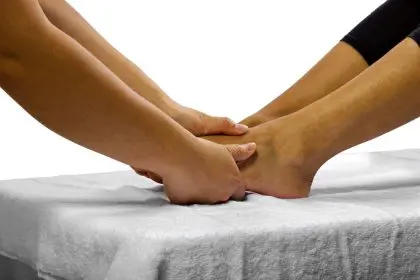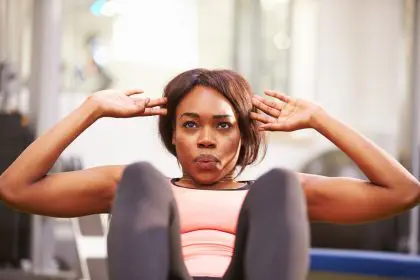The digital age has brought unprecedented convenience to our lives, but it’s also created a silent epidemic of poor posture affecting millions worldwide. As we spend increasing hours hunched over computers and mobile devices, our bodies are paying a hefty price. According to Dr. Brian Wallace, a leading chiropractor, what many dismiss as simple bad posture can lead to serious long-term health complications.
Understanding the posture crisis
Poor posture isn’t just about appearance anymore. Modern lifestyle habits are creating a wave of health issues that extend far beyond temporary discomfort. The average office worker spends over nine hours daily in a seated position, often with compromised posture that strains the spine, shoulders, and neck. This prolonged misalignment can lead to chronic pain, reduced mobility, and even impact internal organ function.
Medical research has shown that poor posture can decrease lung capacity by up to 30%, affect digestion, and contribute to chronic headaches. The pressure on spinal discs from consistent slouching increases the risk of herniation and can accelerate disc degeneration. Perhaps most concerning is the growing number of young adults experiencing posture-related problems traditionally seen in much older populations.
The science behind posture correctors
Posture correctors work through a combination of physical support and proprioceptive training – helping your body relearn proper alignment. These devices function similarly to a well-fitted backpack, creating gentle tension that pulls your shoulders into proper alignment while supporting your spine in its natural position. Dr. Wallace explains that consistent use helps retrain muscle memory, potentially leading to lasting improvements even when not wearing the device.
The mechanism behind these devices is rooted in biomechanics. When we maintain poor posture, certain muscles become overstretched while others tighten and shorten. A well-designed posture corrector helps break this cycle by providing external support that allows overstretched muscles to strengthen and tight muscles to relax. This rebalancing effect can lead to improved muscle tone and better natural posture over time.
Research indicates that proper alignment through posture correction can improve breathing capacity by allowing full lung expansion, enhance circulation throughout the body, and even boost energy levels by reducing unnecessary muscle strain. Some studies suggest that improved posture can also positively impact mood and cognitive function, likely due to better oxygen flow and reduced physical stress on the body.
Selecting and using your posture corrector
Choosing the right posture corrector requires careful consideration of several key factors. First and foremost is adjustability – the device should allow for customization to your body type and specific needs. Look for models with multiple adjustment points that can be modified as your posture improves. Material quality is equally crucial; high-grade, breathable fabrics like hemp or nylon minimize skin irritation and make the device more comfortable for extended wear.
The level of support needed varies among individuals. Those with significant posture problems or chronic pain might benefit from more robust support initially, while others might prefer a lighter device for mild correction. Consider your daily activities and when you plan to wear the corrector – some designs are more discreet and can be worn under clothing, while others offer maximum support but may be more visible.
Implementation strategy plays a crucial role in success. Medical experts recommend starting with 15-30 minutes of wear time, gradually increasing duration as your body adapts. Wearing the device during activities that typically promote poor posture, such as desk work, can be particularly beneficial. However, it’s essential to avoid becoming dependent on the support – the goal is to retrain your muscles, not replace their natural function.
Complementary strategies for posture improvement
While posture correctors provide valuable support, they work best as part of a comprehensive approach to posture improvement. Regular exercise focused on strengthening core and back muscles helps create the internal support needed for maintaining good posture. Specific exercises recommended by physical therapists include:
Targeted stretching routines that help lengthen tight chest muscles and strengthen the upper back can counteract the effects of prolonged sitting. Core-strengthening exercises provide the foundation for proper spinal alignment, while regular cardiovascular activity improves overall muscle tone and posture support.
Ergonomic considerations in your daily environment also play a crucial role. Proper desk setup, including monitor height, keyboard position, and chair support, can significantly impact posture throughout the day. Regular movement breaks and position changes help prevent muscle fatigue and reduce the risk of settling into poor posture habits.
Long-term success and maintenance
Maintaining improved posture requires ongoing attention and effort, even after achieving initial improvements with a posture corrector. Creating sustainable habits is key to long-term success. This includes regular posture checks throughout the day, mindful engagement of core muscles, and conscious attention to alignment during daily activities.
Professional guidance can be invaluable in this journey. Physical therapists and chiropractors can provide personalized advice and exercises tailored to your specific needs and challenges. They can also help monitor your progress and adjust your approach as needed.
Consider the investment in a quality posture corrector as part of your overall health and wellness strategy. The benefits extend beyond immediate posture improvement to potentially include reduced pain, better breathing, improved circulation, and enhanced overall well-being. As our lives continue to involve extensive screen time and sedentary activities, taking proactive steps to maintain proper posture becomes increasingly important.
Remember that posture improvement is a gradual process that requires patience and consistency. Quick fixes rarely provide lasting results. Instead, focus on developing sustainable habits and using your posture corrector as a tool to support your journey toward better alignment and improved health.














